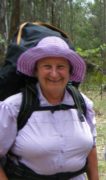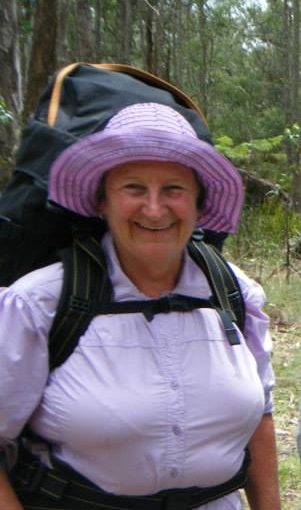 Narrabri Gas Project Presentation. Tuesday 21st July 2020
Narrabri Gas Project Presentation. Tuesday 21st July 2020
Armidale Action on Coal Seam Gas and Mining (AACSG&M) objects to Narrabri Gas Project.
I am speaking on behalf of Armidale Action on Coal Seam Gas and Mining, a sub-group of Sustainable Living Armidale.
On Oct 2011 our group was invited to visit the Pilliga Forest and look at the damage caused by Eastern Star Gas. Our group were appalled by the damage to this beautiful forest. We discussed what could be done to stop the destruction of The Pilliga and decided that we must let people know what was happening in this remote, yet ecologically significant, forest.
Under the banner of AACSG&M I have led regular free tours in the Pilliga since 2011. I do this on a voluntary basis which cost me money for every trip.
There were at least 20 areas where spills of produced water had killed all vegetation. Beside every well there was a small produced water pond at that time, and many had dead animals and reptiles in them. Any plant or animal in contact with produced water died.
Despite spending $17,000,000 Santos have been unable to rehabilitate these dead areas. Santos have planted many trees and shrubs native to The Pilliga and watered them throughout the drought. The vegetation survives until the roots make it down to the clay layer where the produced water is trapped, then die. Santos have had some success with species that are not native to The Pilliga and are more salt tolerant. This does not accord with their rehabilitation requirements.
Santos bought out Eastern Star Gas in November 2011. Nine years later they have not succeeded in developing a plan to manage the toxic produced water. Management of the produced water was not addressed in the 7000-page EIS. AACSG members believe that this project cannot be approved until management of produced water is addressed.
In the exploratory phase Santos has already contaminated at least one aquifer. From The Sydney Morning Herald March 8, 2014. A coal seam gas project operated by energy company Santos in north-western NSW has contaminated a nearby aquifer, with uranium at levels 20 times higher than safe drinking water guidelines, an official investigation has found.
It is the first confirmation of aquifer contamination associated with coal seam gas activity in Australia – a blow to an industry pushing state and federal governments for permission to expand.
Santos was fined $1500 by the NSW Environment Protection Authority, which posted a media release on its website on February 18, without identifying the nature of the contamination.
Two days later, Deputy Premier Andrew Stoner signed a memorandum of understanding with Santos to speed up the project, in the Pilliga forest near Narrabri.
Santos cannot claim the that the aquifers are safe from contamination.
Ms Winters from Santos glossed over management of produced water in the Santos IPC meeting. She stated that Santos is looking at opportunities to beneficially reuse or sell the salt commercially. If no options can be found, the salt will be sent to an EPA-licensed landfill for disposal. I am surprised that a sophisticated company wanting to proceed to production has not investigated these options prior to the IPC hearing and included a detailed management plan. How difficult would it be to make 11 phone calls to the 11 land fill sites that are within the required 200 km of the Narrabri project? As required by the EPA. Santos predict there will be approximately 47.5 tonnes of salt every day for 25 years.
In a press release in the Northern Daily Leader on July 7th Santos announced they had signed a memorandum of understanding with an American firm to convert the waste by-product into sodium bicarbonate, commonly known as baking soda. Kevin Gallagher from Santos said the company had been working with US firm Natural Soda for 12 months to create a commercially viable model for creating a sodium bicarbonate industry for Narrabri.
I compared the 2015 Santos document Water quality Parameters for Produced Water and World Health Organisation drinking water standards: potassium is 6 times World Health Organisation recommendation; Strontium is 17 times higher; aluminum 5 times ; ammonia 80 times; arsenic 3 times; Chromium 4 times; phenol 6 times; and most concerning cadmium 100 times higher than WHO drinking water guidelines. There is also carcinogenic Total Petroleum Hydrocarbons present.
As there is no environmental impact statement for management of produced water, I not found any documents indicating that Santos have informed the public regarding the efficiency of the Leewood reverse osmosis plant in removing contaminants from the produced water. Will the water or sodium be contaminated with the contaminants? What contaminants will be in the water for beneficial use? Assuming that the reverse osmosis is efficient and removes all contaminants, these contaminants are then in the brine. Does Santos have a method of removing heavy metals and hydrocarbons from the brine?
I am not keen to bake a cake with cadmium and other heavy metals in Natural Soda’s baking soda.
While completing a ceramics certificate at TAFE in glaze technology students were not permitted to remove the lid from the cadmium containers until using a dust mask with the correct filter, an apron and gloves. I learned to treat cadmium with great respect.
Santos used the Leewood water to irrigate a crop adjacent to Leewood in 2018. I viewed the crop in February 2018 and would describe it as crop failure. There was a lot of bare ground, and a weak patchy crop of lucerne.
Don Mackenzie a Coonamble farmer stated that ‘I would be disappointed in the way it is growing; I have seen better dry land crops of lucerne’
Santos have not complied with the EPA’s recommendations about site specific soil surveys nor with ongoing soil monitoring when employing irrigation to dispose of their waste. Neither have they complied with EPA’s request for monitoring and trigger systems to watch for toxicity in Bohena Creek as a result of treated water discharge.
For nine years I have had major concerns for the integrity of The Pilliga and for the future of surrounding farming. In 2015 I wrote the book ‘The Plundering of Pilliga and Leard Forests and Surrounding Farmlands’. I am grateful to Armidale Branch of NPA for contribution to printing costs. I will include a copy of my book to as part of my submission.
Thank you
Pat Schultz.
